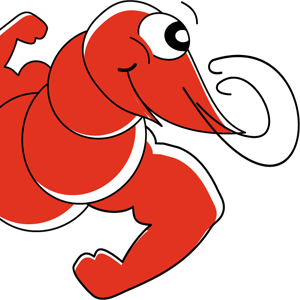
Feed management is one of the most important aspects of successful shrimp production as the feed accounts for 50 to 60% of the Operation cost. Feed management strategies should therefore be aimed at optimizing feed inputs, reducing the Feed Conversion Ratio (FCR) and reducing the negative impact of excess feeding on pond bottom and water quality.
Shrimp tends to eat in places that are cleaned by paddlewheel aerator. Thus, provide feed for shrimp where it is clean; avoid feeding in dirty places or near edges of the pond. Depending on different situations, as low / high temperature, low DO, rainfall, molting, disease conditions etc., can increase or decrease the amount of feed for a day accordingly. If Autofeeder is installed, verify the storage and adjust the timings according to check tray observation.
The use of feeding tray (Check tray) is very important to check the amount of feed, which reflects the feeding possibility, health, and survival rates of shrimp, as well as conditions at the bottom of the pond. Feeding tray is usually a net with a square or round steel frame with edges' height not more than 5 cms. The area of a feeding tray is usually from 0.4 to 0.6 M2. Feeding tray should be placed close to the bottom of the pond, where it is clean and 2 M away from the slope of the pond bund, aerator, sluice gate and pond corners. Depending on the area and density, 4 to 6 feeding trays can be placed in a pond.
| Check Tray observation | Changes to make in the next feeding time |
|---|---|
| If shrimp eats all the feed | Increase 5% of the amount of feed in the next feeding time |
| If the feed leftover is 10% | Keep the same amount of feed |
| If the feed leftover is around 11 - 25% | Reduce 10% of the amount of feed in the next feeding time |
| If the feed leftover is around 26 - 50% | Reduce 30% of the amount of feed in the next feeding time |
| If the feed leftover is more than 50% | Stop feeding next time |
| Days of Culture | The amount of feed in Check tray | Checking period (hrs) |
|---|---|---|
| 21 – 60 | 10gm/1kg feed | 2.5 – 2.0 |
| 61 – 90 | 15gm/1kg feed | 2.0 – 1.5 |
| >90 | 20gm/1kg feed | 1.5 –1.0 |
Note: On days when weather changes, such as severe rainy or sunny days, feed only 70-80% of the amount of required feed for shrimp. Observe shrimp's molting to reduce the amount of feed intake, and increase after the molting process finish.
| Gut contents Colour | Suspected Feed | Suspected Gut Contents | Do treatment |
|---|---|---|---|
| Dark brown or Black | Benthic detritus or sediment | Under feeding or inadequate feeding frequency | Increase feeding and frequency |
| Pink or Red | Cannibalized body parts by feeding dead shrimps | Death (Mortality) and Disease in pond | Check for Disease and Dead shrimps and do treatment |
| Green | Benthic algae | Under feeding | Increase feeding |
| White or Pale | Manufactured feed or natural food | Gut infections | Reduce feeding and do treatment |
| Light to Golden brown | Manufactured feed | Normal condition | Good. Follow regular chart. |